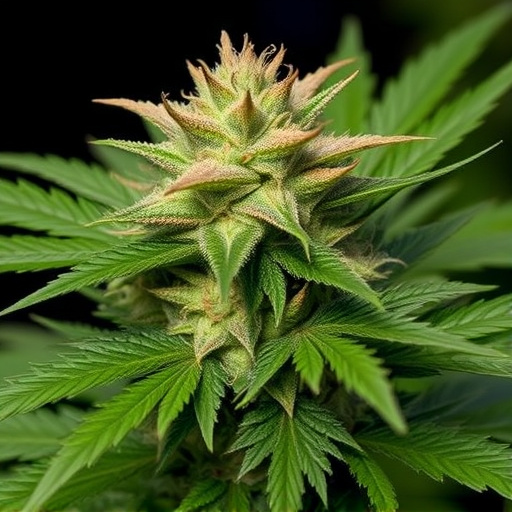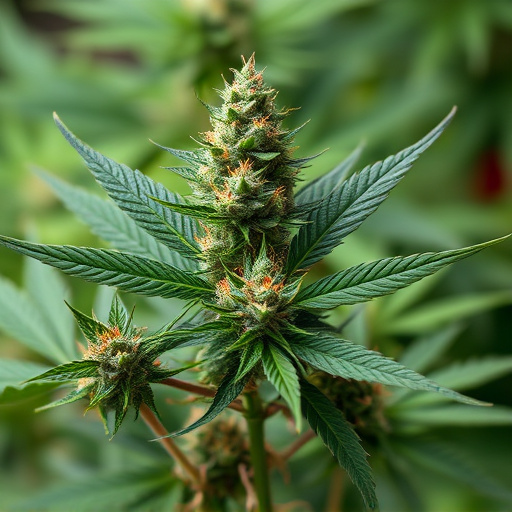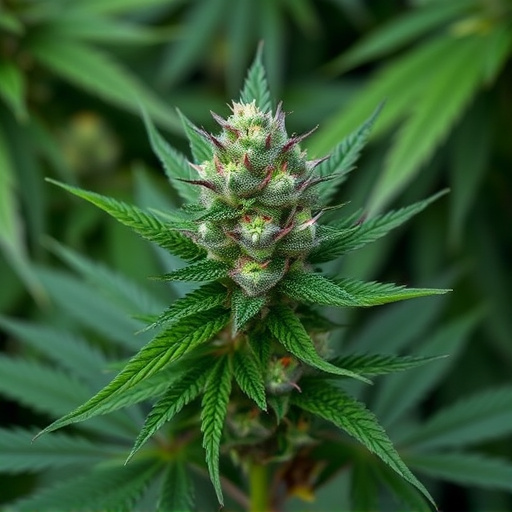Cannabis, with its cannabinoids THC and CBD, offers hope as an alternative treatment for migraines and chronic pain due to its interaction with the body's endocannabinoid system. High-CBD strains like Granddaddy Purple, Charlotte's Web, and Blue Dream are gaining popularity for their anti-inflammatory properties and balanced ratios of THC:CBD, providing effective pain relief without psychoactive effects. Terpenes in these strains may further enhance their efficacy. While cannabis shows promise in reducing pain intensity and improving quality of life, future research is needed on dosage, tolerance, metabolism, and global legal access to normalize cannabis-based treatments for migraines.
Cannabis flower has gained attention as a potential natural remedy for pain management, especially when it comes to specific conditions like migraines. This article delves into the science behind cannabis and its effects on pain relief. We explore various cannabis strains known for their migraine-relieving properties, discuss their potential benefits, and examine safety considerations. Additionally, we provide insights into future research directions, shedding light on how cannabis strains for migraines may offer a promising alternative or adjunctive therapy.
- Understanding Cannabis and Its Effects on Pain Relief
- Exploring Cannabis Strains Specifically for Migraines
- Potential Benefits, Safety Considerations, and Future Research Directions
Understanding Cannabis and Its Effects on Pain Relief

Cannabis has gained significant attention for its potential in providing pain relief, with a particular focus on certain cannabis strains for migraines and other chronic conditions. The plant contains various chemical compounds known as cannabinoids, most notably THC (tetrahydrocannabinol) and CBD (cannabidiol). These cannabinoids interact with the body’s endocannabinoid system, which plays a crucial role in regulating pain perception and inflammation.
When consumed, cannabis can help reduce pain by binding to receptors in the nervous system, potentially blocking pain signals from reaching the brain. Research suggests that specific cannabis strains for migraines may offer more effective pain management due to their balanced ratios of THC and CBD. Unlike THC, which is known for its psychoactive effects, CBD has minimal psychoactivity but exhibits anti-inflammatory properties, making it a promising option for those seeking alternative pain relief methods without the mental alteration associated with high-THC cannabis strains.
Exploring Cannabis Strains Specifically for Migraines

Cannabis has long been used as an alternative treatment for various types of pain, and one area where it shows promise is in alleviating migraines. When exploring cannabis strains specifically for migraines, it’s essential to consider both THC (tetrahydrocannabinol) and CBD (cannabidiol) levels. Studies suggest that a balanced combination of these compounds can be effective. Strains with higher CBD content are often preferred due to their potential anti-inflammatory and pain-relieving effects without the psychoactive properties of THC.
For instance, certain cannabis strains known for their high CBD content have been found to reduce migraine frequency and intensity. Some popular choices include Granddaddy Purple, Charlotte’s Web, and Blue Dream. These strains are often sought after by folks looking for natural ways to manage migraines. Moreover, specific terpenes present in these strains may further contribute to their effectiveness in alleviating migraine symptoms, offering a promising alternative or adjunctive treatment option.
Potential Benefits, Safety Considerations, and Future Research Directions

Potential Benefits
Cannabis flower has gained attention for its potential in managing pain, including chronic conditions and specific ailments like migraines. Several cannabis strains are renowned for their analgesic properties, offering relief through various compounds such as THC, CBD, and terpenes. These compounds interact with the body’s endocannabinoid system to modulate pain perception and inflammation. Research suggests that cannabis may reduce pain intensity, improve mobility, and enhance overall quality of life for individuals suffering from pain-related conditions.
Safety Considerations & Future Research Directions
While cannabis shows promise, safety considerations cannot be overlooked. The effectiveness and appropriate dosage vary widely among individuals due to factors like tolerance, metabolism, and specific medical history. Additionally, the legal status of cannabis varies globally, limiting access to controlled research. Future studies should focus on normalizing cannabis-based treatments through extensive clinical trials, exploring personalized dosing, and understanding long-term effects. This will enable healthcare professionals to integrate cannabis safely into pain management strategies, especially for conditions like migraines where conventional treatments may have limited success or significant side effects.
Cannabis has shown promise in alleviating pain, particularly when specific strains are targeted for conditions like migraines. While further research is needed to fully understand its mechanisms and safety, exploring cannabis strains for migraines could offer a natural alternative for those seeking relief from this debilitating condition. As the landscape of medical marijuana continues to evolve, ongoing studies will help unlock the full potential of cannabis in providing effective and safe pain management solutions.














